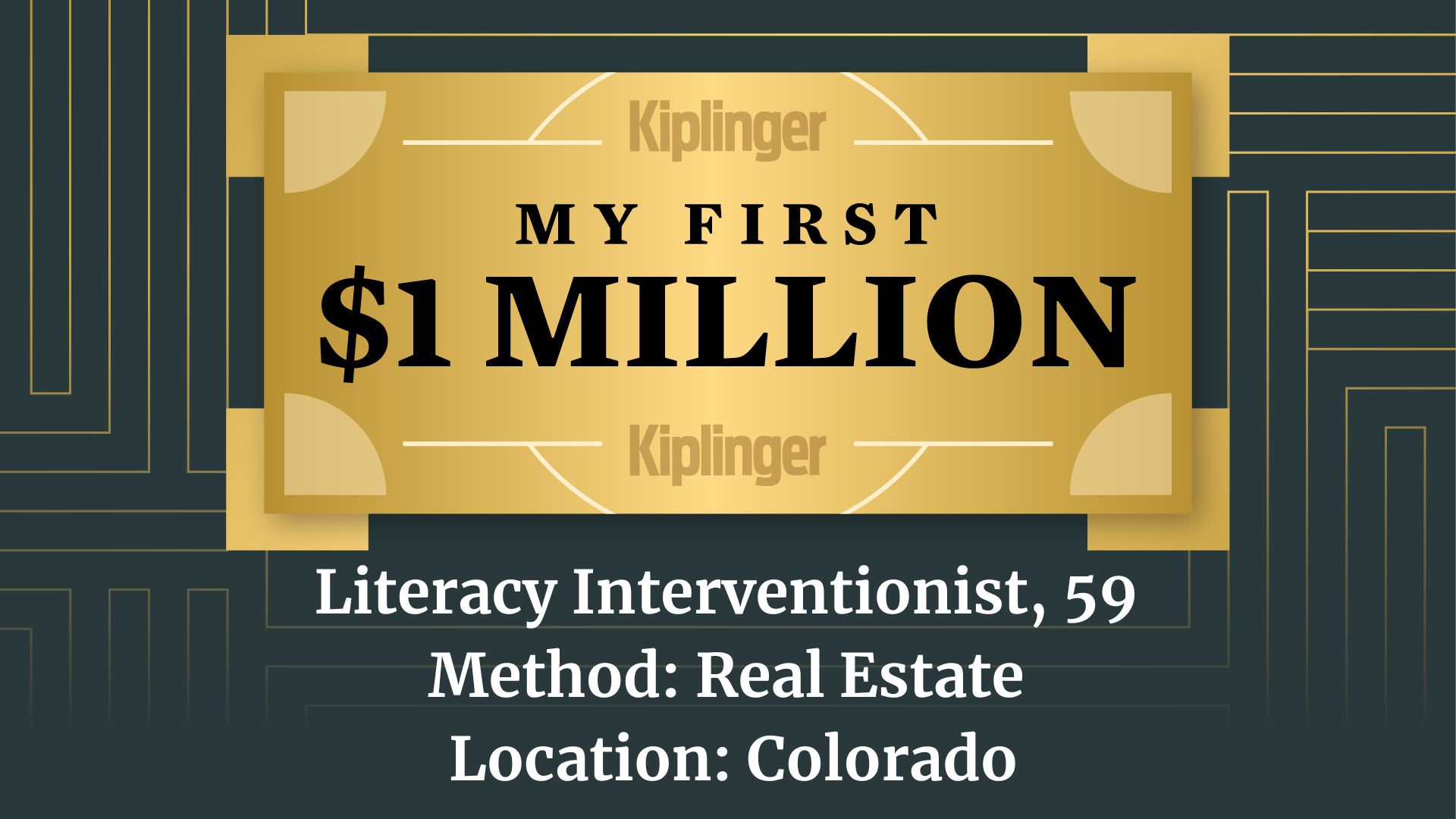Are You on Track? Financial Planning Goals for Every Decade of Your Life
See what lies ahead, and check your progress against some handy retirement planning benchmarks for your 20s, 30s, 40s, 50s, 60s and 70s and beyond.


Your career and lifestyle look completely different when you’re in your 20s compared with when you’re in your 60s: Your financial focus and planning in each decade should follow suit.
Each decade is riddled with its own risks and problems, so it’s important to know what to expect. Which decade can you afford to take more risk? Which decade should you really start to plan for retirement? Which decade should you focus on managing debt?
Set yourself up for future financial success by living each decade to its fullest.
Written by Jamie Hopkins, Esq., LLM, MBA, CFP®, RICP®. He serves as Director of Retirement Research at Carson Wealth and is a finance professor of practice at Creighton University's Heider College of Business. His most recent book, "Rewirement: Rewiring The Way You Think About Retirement," details the behavioral finance issues that hold people back from a more financially secure retirement.

Planning In Your 20s
Tip No. 1: Invest in Yourself
When you are in your 20s and just starting a career, take time to invest in yourself. This might mean going back to school to earn a master’s degree or professional certification. Take the time to grow your human capital, life experiences and knowledge — it doesn’t get easier to invest in yourself later on in life.
Tip No. 2: Build Your Positive Financial Behaviors
Start by saving. Put money into your employer’s 401(k) or set up an IRA. Even if you can only put a few hundred dollars away, work on developing and automating your savings.
Tip No. 3: Take Some Risk
When you’re young is the best time to take risk. It’s true from both an investment standpoint and a life standpoint. When investing, look for equities and don’t invest too conservatively — you have a long time horizon to let your money grow.
Take risks in life, too. Look for start-ups and opportunities that will let you grow and flourish. I know many young people just want a sure thing in their first job. However, a company that will grow and help you grow might be a better fit in the long run.

Are You on Track? Benchmarks for Your 20s
A rule of thumb for your 20s:
By the end of your 20s, try to develop an emergency fund that holds three to six months of your living expenses in cash or an easily accessible investment with low risk.
How much you should have saved by the end of your 20s:
An amount that’s one to three times your starting salary.

Planning In Your 30s
Tip No. 1: Manage Your Debt
In your 30s it’s vitally important you manage debt obligations carefully. If you have student, personal or car loans, credit card debt or a mortgage, you need to have a plan for how to pay them off — and which ones to tackle first. From a behavioral standpoint, some suggest you should tackle low-balance accounts first, to get the satisfaction and reinforcement of quickly paying them off. On the other hand, a financial planning approach suggests you tackle high-interest-rate debt first to save on interest costs. Either way, get a plan, and get started. What really matters is that you don’t overborrow.
Tip No. 2: Get Proper Insurance Coverage
One of the biggest risks for many people in their 30s is they’re still acting as if they’re invincible. This leads to many people being underinsured. Make sure you have the right health care coverage, car insurance, property and casualty for your home, disability insurance and life insurance. Especially as your wealth starts to grow — perhaps along with a family — your insurance and financial needs will continue to change.
Tip No. 3: Start Building Up Retirement Assets
Hopefully your career is blossoming and you’re able to set aside money. This means increasing how much you’re saving for retirement. If you work with an employer that offers a 401(k), consider increasing your salary deferral. If you run your own company, look into setting up a SEP or SIMPLE IRA to help you set aside more money each year for the future.

Are You on Track? Benchmarks for Your 30s
A rule of thumb for your 30s:
By your mid- to late 30s, it’s ideal to be saving anywhere from 10% to 15% of your income each year for the future. The more the better. Remember that saving an additional 1% of income each year can lead to tens of thousands more money saved for retirement.
How much you should have saved by the end of your 30s:
An amount that’s three to six times your current salary.

Planning In Your 40s
Tip No. 1: Build Your Wealth
In your 40s, you’ll likely hit your peak earning years. This means it’s actually time to start building your wealth. Make sure your investments are properly aligned with your future goals and continue to be heavily invested in growth assets.
Tip No. 2: Cut Back on Unnecessary Expenses
By your 40s, you’ve probably picked up some unnecessary spending habits or costs along the way. Now is a good time to review your overall budget, spending and expenses. Perhaps you have too many entertainment subscriptions, are paying too much for your phone bill, or your car doesn’t fit your lifestyle. Any of these things could be changed and perhaps bring down your spending.
Tip No. 3: Take Care Of Yourself
The midlife crisis can start to sneak up on people in their 40s. Many people feel burned out or stressed at work — it’s important to take care of yourself. Set aside time to do financial planning and wellness. Taking control of your finances can help you take care of yourself and reduce stress. Burning out could negatively affect your health and finances and add additional layers of stress onto an already challenging situation.

Are You on Track? Benchmarks for Your 40s
A rule of thumb in your 40s:
Focus on increasing your savings and investing heavily in long-term growth assets, such as equities and other investment growth assets.
How much you should have saved by the end of your 40s:
- Six to 10 times your current salary.

Planning In Your 50s
Tip No. 1: Get a Grip on Retirement Income Planning
Retirement income planning should start in your 50s. This means sitting down and seeing how much you have saved, listing your expenses and figuring out the income you can generate in retirement. If there’s a shortfall projected, you still have time to restructure your plan. That could mean saving more or cutting expenses. It’s also a good time to look at other retirement income sources, including a deferred income annuity, and to review your investment allocation.
Tip No. 2: Look into Long-Term Care Planning
While long-term care planning is not what everyone dreams about for their 50s, it’s likely the best time to do planning. With retirement starting to creep into your mind, one of the biggest risks you face in retirement should also be front and center. Long-term care insurance and funding strategies are best purchased and reviewed in your 50s. Once you get into your 60s, it can be harder to qualify for long-term care coverage. Take a look in your 50s and decide if it makes sense for you.
Tip No. 3: Think About Family and Next Generation Planning
In your 50s you might be getting pressure from both sides of your family — your parents, who are likely well into retirement now, and your children. Planning for how you’ll help everyone in your family is crucial, both your children and parents. For children, hopefully you started saving for college expenses as soon as possible, but you need to discuss other financial topics as your children migrate out of the home. But just as important, you need to discuss how you will support and take care of aging parents. All of this planning needs to start with open and honest conversations at the family level.

Are You on Track? Benchmarks for Your 50s
A rule of thumb in your 50s:
As you start to think about retiring and wonder if you have enough saved, a good rule of thumb is to have saved 25 times what you plan to spend each year in retirement. So, if you want to spend $100,000 a year from your savings in retirement, you should retire with $2.5 million. This figure doesn’t take into account any income you might receive from Social Security or a pension, which could significantly lower the amount you need saved. But let’s say your Social Security is $40,000 a year. Well then your investments only need to provide $60,000 a year, or $1.5 million, which is still a lot. However, most retirees do not need $100,000 of cash flow to meet their needs. But since you still have time until retirement in your 50s you can start to increase your retirement savings or even plan to work longer. By working longer you can reduce the amount of money you need saved for retirement and allow yourself more time to save money.
How much you should have saved by the end of your 50s:
Eight to 15 times your current salary.

Planning In Your 60s
You’ve spent your whole working career saving, investing and paying off bills. Now it’s time to turn your savings into retirement income. This decision requires a lot of planning because you need to make this money last for the rest of your life — and no one knows how long that’ll be. Working as long as you can and deferring Social Security are two ways to help ease longevity concerns.
While a lot of people call longevity a risk, it’s a good thing. However, it does make other risks, like health care, long-term care and inflation, more dangerous to the sustainability of your retirement income. So, get a plan in place and know how you’ll generate income, when you plan to retire, when to claim Social Security and when to put the plan in motion.
Tip No. 2: Re-Evaluate Work and Meaning
Retirement is not just a financial planning topic, it’s a long and real part of your life. Finances are just a means to an end — the end is your goals and what you want to accomplish in retirement.
Make sure you take the time to envision what life will be like after you stop working. Take a look at what you want to do and consider phasing into retirement by going part-time. If you’re single, retirement could be more challenging for you since you leave behind the relationships you’ve built in your workplace.
Staying engaged during retirement is important. For those who might become isolated, it’s crucial you have a plan on how you’ll find meaning, happiness and value in retirement.
Tip No. 3: Brush Up on Your Estate Planning
While you should start your estate planning basics early in life, when you near retirement, it’s good to do a full overview of your estate planning. This can include reviewing what insurance you have and whether it’s still needed or if you need more. You also need to review your estate planning documents to make sure they’re in order and that all of your assets are properly titled. Do another beneficiary review, especially as assets start to get turned into retirement income.

Are You on Track? Benchmarks for Your 60s
A rule of thumb in your 60s:
As you head into retirement, make sure you understand the 4% safe withdrawal rate for retirement spending. The rule states that historically in the U.S., with a 50% bond investment and a 50% stock investment, you could afford to spend 4% of your investments a year and not run out of money for 30 years. This is a conservative approach, but it does give a good starting point on how much you can spend in retirement.
How much you should have saved by the end of your 60s:
- 10 to 25 times your current salary, depending on spending goals and other income sources.

Planning In Your 70s And Beyond
Tip No. 1: Enjoy Life
You’ve worked hard your whole life, and you should enjoy your retirement. Having a sound financial plan that shows what you can spend and how long your money will last can allow you to do just that. A lot of people worry about having enough money in retirement, so they hoard their money, refuse to spend it and ultimately don’t enjoy themselves. They’re too fearful about the uncertainty of the future. Having a plan can help you live the lifestyle you want.
Tip No. 2: Make Your Money Last a Lifetime
A big part of planning for retirement while working and is about saving, investing and growing your wealth. Once you get into retirement, you need to monitor how your plan is doing and make any adjustments necessary. Your situation, the markets and your goals will change as your lifestyle changes. As such, you can’t stick with one plan from the first day of retirement to day 10,000 (nearly 27 years into retirement).
Don’t forget to plan and manage your required minimum distribtions (RMDs) from IRAs and 401(k)s. Optimizing these assets can require new types of planning and tax strategies. As you start to spend down your money, keep track of your spending percentage of your assets. Use the 4% rule to help monitor your plan over time. If your withdrawal rate from your assets starts nearing 8% to 10%, you might want to consider cutting back on expenses. On the flip side, if your spending percentage of your overall assets drops down below 3%, you could actually increase your spending.
Tip No. 3: Complete Your Legacy and Charitable Planning
You should have started estate planning well before your 70s, but when you enter retirement you’ll have more time and energy to focus on leaving behind a legacy. Legacy planning isn’t just about taxes and estate planning — it’s more about meaning and impact. It can mean passing on security to family members, giving back your time to charities, or funding a worthwhile and meaningful initiative you care deeply about. Giving back in retirement will keep you more enganged and reduce the likelihood of becoming isolated and suffering from depression.
Additionally, after you hit age 70½ and need to take RMDs from an IRA, some great charitable giving strategies, like qualified charitable distributions (QCDs), are available to retirees. QCDs allow you to take a distribution in an IRA, send it directly to a charity, help offset your RMD requirements for the year and have it not treated as part of your taxable income.

Are You on Track? Benchmarks for Your 70s
A rule of thumb for your 70s and beyond:
Now that you’re in retirement, you need to track your spending and the longevity of your retirement portfolio. The biggest rule of thumb is realizing you might be underestimtating your life expectancy. For instance, for those who are alive at age 65, there’s a greater than 50% chance for a couple that one individual will live to 90 and almost a 25% chance one will live to 95. Plan to have many years ahead of you. Longevity isn’t a risk — it’s a gift for those who plan. Don’t plan for the middle, plan for the end point.
How much you should have saved for retriment by age 70 and beyond:
Honestly, it’s no longer time to be thinking about savings. Instead, it’s time to be thinking about income. If you want to make your money last, your withdrawal rate has to be reasonable. If it gets up to 10% of your portfolio balance per year, you have a risk of running out of money. Try to keep it closer to 4 % to 5% of your total wealth that you’re spending down.
Investment advisory services offer through CWM, LLC, an SEC Registered Investment Adviser.
Get Kiplinger Today newsletter — free
Profit and prosper with the best of Kiplinger's advice on investing, taxes, retirement, personal finance and much more. Delivered daily. Enter your email in the box and click Sign Me Up.

Jamie Hopkins is a well-recognized writer, speaker and thought leader in the area of retirement income planning. He serves as Director of Retirement Research at Carson Group and is a finance professor of practice at Creighton University's Heider College of Business. His most recent book, "Rewirement: Rewiring The Way You Think About Retirement," details the behavioral finance issues that hold people back from a more financially secure retirement.
-
 Retire in Malta for Quiet Coastal Perfection
Retire in Malta for Quiet Coastal PerfectionSeemingly remote yet easily accessible to other points in Europe, sunny Malta offers paths to citizenship and residency for families and retirees.
By Drew Limsky
-
 How This Literacy Interventionist Made $1 Million
How This Literacy Interventionist Made $1 MillionEver wonder how someone who's made a million dollars or more did it? Kiplinger's new My First $1 Million series uncovers the answers.
By Joyce Lamb
-
 What to Do With Your Tax Refund: 6 Ways to Bring Growth
What to Do With Your Tax Refund: 6 Ways to Bring GrowthUse your 2024 tax refund to boost short-term or long-term financial goals by putting it in one of these six places.
By Rachael Green
-
 What Does Medicare Not Cover? Eight Things You Should Know
What Does Medicare Not Cover? Eight Things You Should KnowHealthy Living on a Budget Medicare Part A and Part B leave gaps in your healthcare coverage. But Medicare Advantage has problems, too.
By Donna LeValley
-
 12 Great Places to Retire in the Midwest
12 Great Places to Retire in the MidwestPlaces to live Here are our retirement picks in the 12 midwestern states.
By Stacy Rapacon
-
 10 Cheapest Small Towns to Live In
10 Cheapest Small Towns to Live InThe cheapest small towns might not be for everyone, but their charms can make them the best places to live for plenty of folks.
By Dan Burrows
-
 15 Reasons You'll Regret an RV in Retirement
15 Reasons You'll Regret an RV in RetirementMaking Your Money Last Here's why you might regret an RV in retirement. RV-savvy retirees talk about the downsides of spending retirement in a motorhome, travel trailer, fifth wheel or other recreational vehicle.
By Bob Niedt
-
 The Cheapest Places To Retire in the US
The Cheapest Places To Retire in the USWhen you're trying to balance a fixed income with an enjoyable retirement, cost of living is a crucial factor to consider.
By Stacy Rapacon
-
 The Six Best Places to Retire in New England
The Six Best Places to Retire in New Englandplaces to live Thinking about a move to New England for retirement? Here are the best places to land for quality of life, affordability and other criteria.
By Stacy Rapacon
-
 13 Smart Estate Planning Moves
13 Smart Estate Planning Movesretirement Follow this estate planning checklist for you (and your heirs) to hold on to more of your hard-earned money.
By Janet Kidd Stewart
